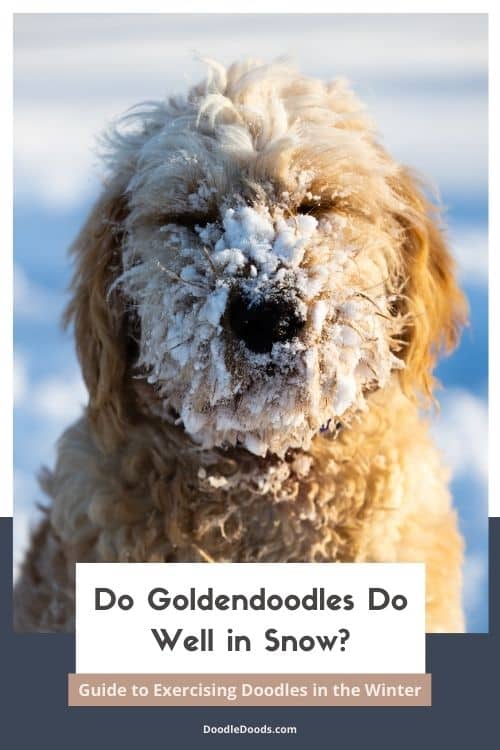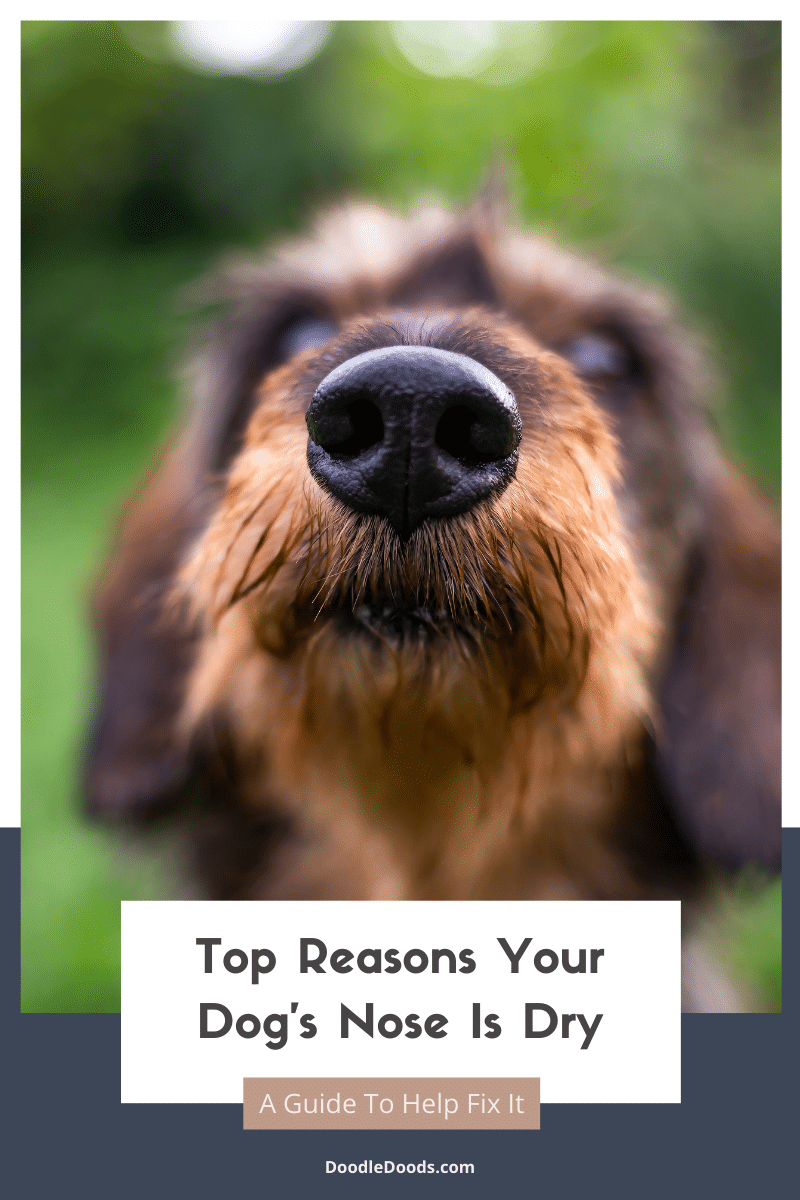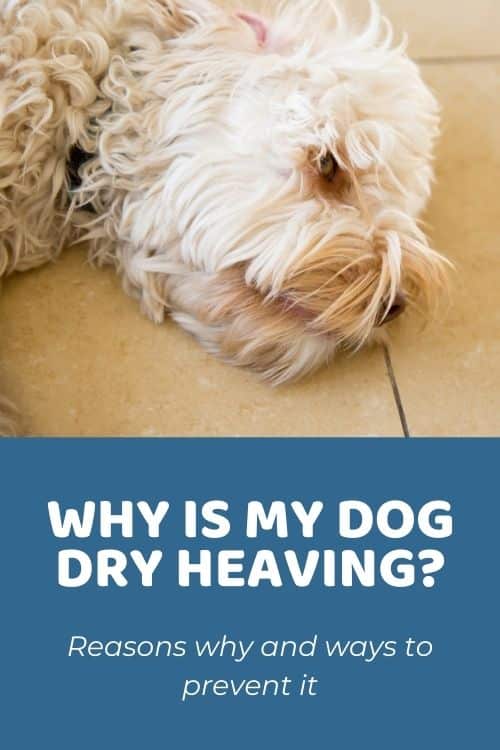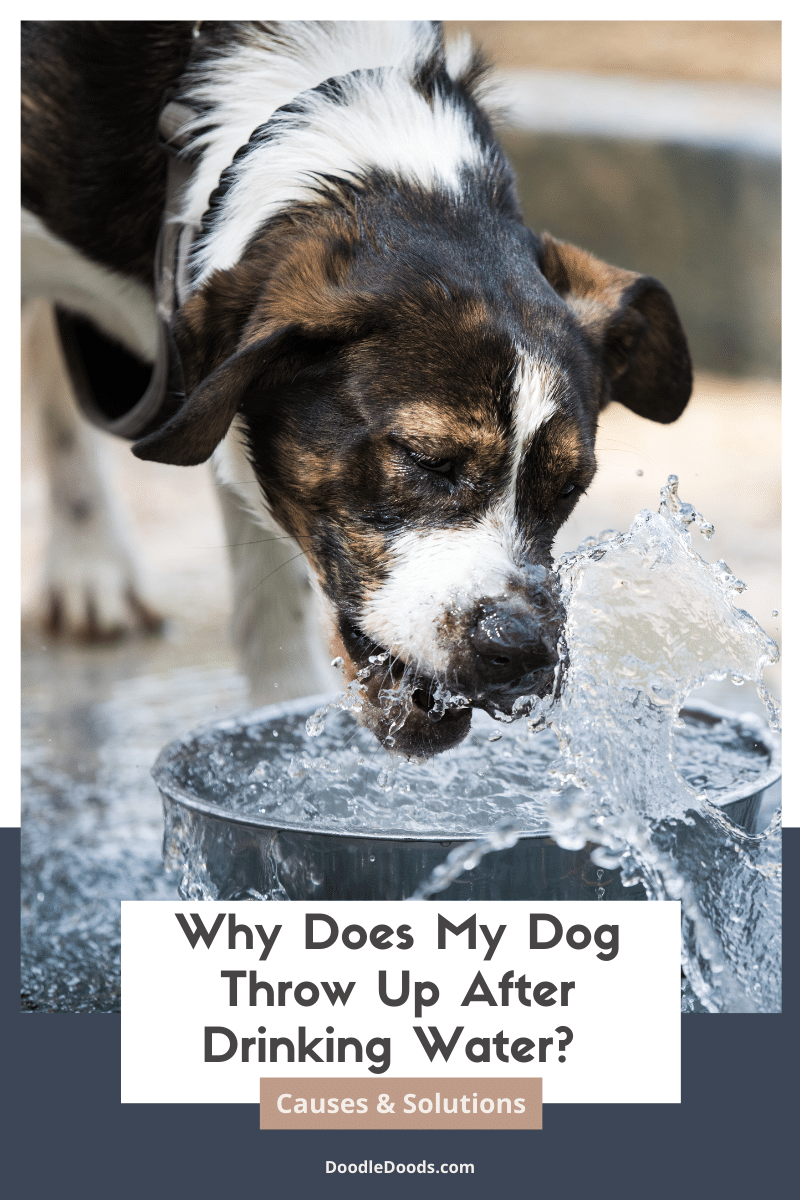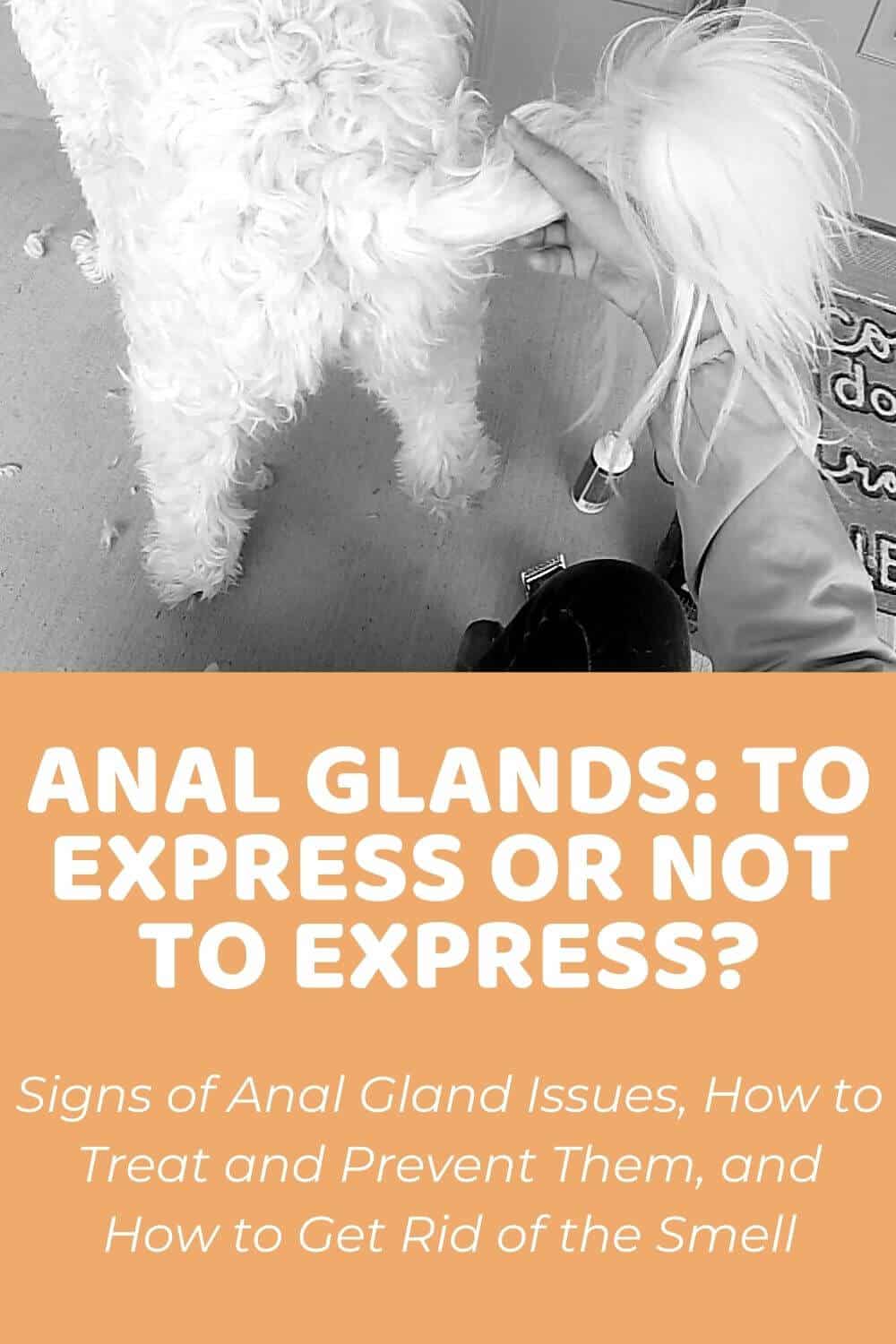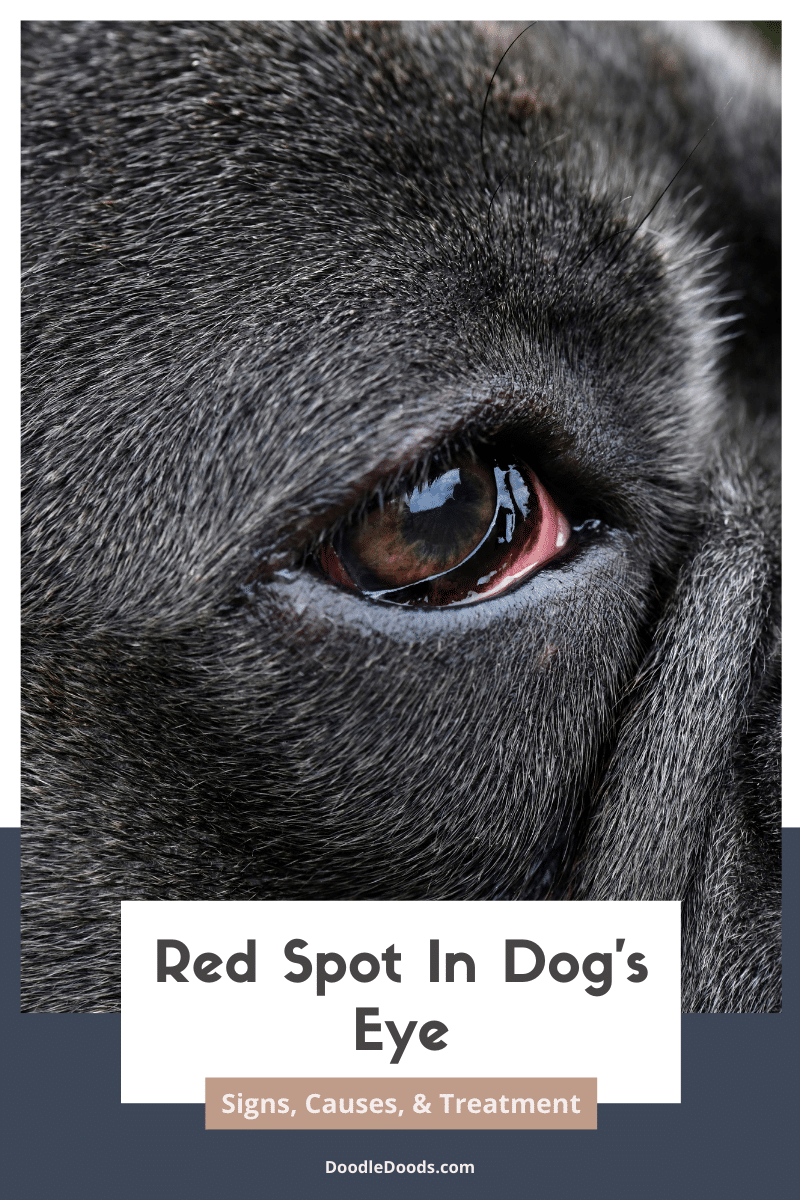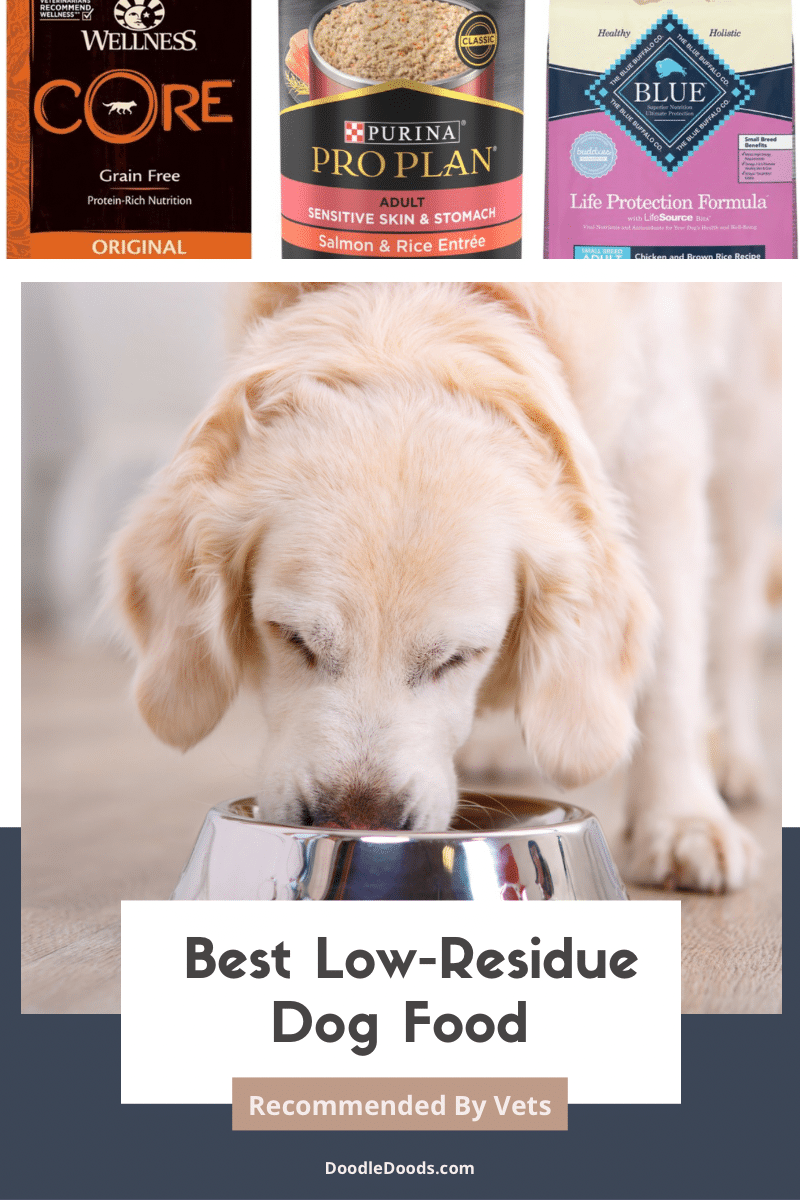Goldendoodles need plenty of exercise. There’s no getting away from that. They are energetic hounds who can easily get themselves into all kinds of trouble without a good amount of both physical and mental stimulation. However, if you live in a place that gets pretty cold in the winter, you may worry about the consequences of taking your pup out for longer periods. Do Goldendoodles like the cold? Do Goldendoodles do well in the snow?
While taking your pet for walks is absolutely a necessary chore, if you want to be spared the consequences of their boredom, it doesn’t need to be a tedious one. In fact, you and your dog could have a great time enjoying the crisp air and rollicking around in the snow. You’ll just be sure to keep a close eye on your pal and make sure they are well-protected from the elements while you’re doing so.
Table of Contents
- Do Goldendoodles Like To Play In The Snow?
- Why Your Goldendoodle Might Like/Dislike The Snow
- The Best Times To Take Your Goldendoodle Outside
- Determining Your Dood’s Cold Tolerance
- 7 Tips To Keep Your Goldendoodle Happy and Healthy in Winter
- Frequently Asked Questions About Exercising Goldendoodles in The Winter
- Goldendoodles in Snow Final Thoughts
Do Goldendoodles Like To Play In The Snow?
Most dogs love playing outside, no matter the weather. In fact, for many, the wonder that is snow only serves to add to the fun! Like in our earliest days before snow became tiresome to us, they see it as an exciting treat. And unlike us, dogs tend never to lose their childlike fascination with the cold stuff. They will roll in it, bounce into it, jump into snow drifts, and just generally have a marvelous time. After all, they don’t have to worry about shoveling or attempting to drive through it. They get all of the fun and none of the bother.
Why Your Goldendoodle Might Like/Dislike The Snow
Then again, for every ten dogs who adore snow, you’ll get a hound that will turn their nose up at it. These are the ones who feel the cold a little harder. You will have to really work to get them out to do their business when the temperatures start to dip. If you’re successful, they will dash out, do what they need to do and then rush back into the comfort of a nice sofa or a snuggly couch. After all, every dog is an individual, and what appeals to one (say plunging headlong into every snow drift) won’t to another.
Aside from personality, a few other factors will play into whether your Goldendoodle likes to play out in the snow, as well as whether they like to do so in short bursts or stay out all day long. While determining your pup’s specific cold tolerance (see below) will give you an idea of what to expect, the only real way to know whether your Goldendoodle likes or dislikes the snow is to get them out there playing in it.
The Best Times To Take Your Goldendoodle Outside
Before venturing out into that winter wonderland, there are a few things you’ll need to keep in mind. Cold temperatures, snow, ice, and everything else that goes along with that pose an increased risk of both injury and illness. So, you’ll need to take the proper precautions when spending time outdoors under these kinds of conditions.
Firstly, it’s obviously good to pay attention to the temperature. 45 degrees is pretty comfortable for any dog. Lower than this, and you’ll need to be more careful. Between 45 and 32 degrees is not great for short-coated breeds and those otherwise sensitive to temperature. Under 32 degrees is likely to be a bit much for most dogs without a nice winter coat, at least. At below 20 degrees, only the more hardy, double-coated pups should be going out and always under close supervision.
You’ll also need to factor in wind chill when looking at temperature. As you well know, if you’ve been dealing with colder climates for a while, even mild conditions can feel more extreme with a strong wind whistling about your ears. Being out too long in such conditions can up your pet’s risk of hypothermia (yes, canines suffer from this too). Low body temperature can be a significant problem and may even require emergency medical care.
Early symptoms of hypothermia include:
- Shivering
- Curling up for warmth
- Sluggish movements
- Slowed breathing
- Changes in heart rate
Determining Your Dood’s Cold Tolerance
In knowing how long your pup will be able to handle the cold comfortably, you’ll need to consider several things:
Coat Type
While your Goldie will love any opportunity to play, neither of their parent pups are specifically cold-weather breeds. This means they haven’t got the same self-insulating coat that say Huskies, St Bernards, and Bernese Mountain Dogs do. That being said, Golden Retrievers do have double coats (consisting of a longer outer layer of hair and a much shorter, denser one that sits beneath). This gives these dogs some protection from the elements, but most Doodles don’t inherit this coat type. This kind of temperature regulation was sacrificed in the quest to breed a low-shed “hypoallergenic” hound.
Some Doodle puppies do manage to sneak a double coat through. These are more likely to be the straight or “flat-coated” kind found in F1 and F2 litters. It is pretty rare, though, even in these dogs. You’ll know if your pup has this kind of coat because they will shed – especially with the changing of the seasons – when the temperatures go from cold to hot and back again. Either way, if you keep some length to your pet’s coat, they will likely better tolerate the moderate cold for a brief time, but it’s still good to keep an eye on them.
Size
Goldendoodles are often (but not always) medium-to-large dogs at around 15 to 20 inches in height and weighing between 20 and 90 pounds. These pups tend to do a little better in the cold as they have a low surface area-to-volume ratio meaning they don’t lose heat quite as much as littler dogs do. Smaller Goldies also tend to be more immersed in the snow, which again will severely impact their body temperature. So you shouldn’t keep your Toy or Mini Goldendoodle out quite as long as you would a Medium or Standard one.
Conditioning
The environment in which they were raised can also have quite an effect on your hound’s ability to withstand either hot or cold temperatures. Much like people, pups adapt to the area that they live in. If your pup has been going out in the cold every winter since they were tiny, they will have built up a better tolerance to it than a dog raised in a more temperate climate.
Age
Younger dogs and those in good health will have plenty of enthusiasm for going out even when the thermometer starts to plunge dramatically. These guys and gals will spend a lot of time in motion, which will help them to stay warmer for longer. Older dogs and those in poor health may have more issues with temperature regulation, not just because they don’t move as fast but because various illnesses will make them feel far less comfortable about being cold. Older dogs may also experience joint pain when temperatures drop.
Coat Color
Believe it or not, coat color can also play a role in how well your four-legged friend handles snow. Dark colors absorb heat from the sunlight, which will help dogs lucky enough to have these kinds of coats warmer for longer compared with their lighter-colored compatriots.
7 Tips To Keep Your Goldendoodle Happy and Healthy in Winter
When taking your pet outside in cold conditions, whether they rush right out the door or require a little more coaxing, safety must always come first. A few simple steps can protect your pup from the extreme cold and everything else that goes along with it.
Make Sure They Are Supervised
A golden rule of thumb is to never leave your dog unsupervised in cold weather. You never know how quickly the conditions could start to affect them. Pay close attention to signs that their body temperature is getting too low (see above for early symptoms of hypothermia), and make sure to get them inside, dry, and warmed up when you spot these.
It’s also not a good idea to let your pup off the leash in unsecured areas or even secure ones you’re unfamiliar with. Your four-legged friend could run off and become disoriented and lost in the uniform countryside, get hit by a car that’s unable to slow down in time or fall through thin ice into the sub-zero temperature water below.
Keep Them Away From Chemicals
So many different types of chemicals are used to make roads less slippery or help cars operate better. Many of these pose a significant risk to dogs. Yet many pet parents remain completely unaware of the dangers these represent. Take anti-freeze, for instance. It can leak from passing or parked cars, and dogs, attracted by the smell, often lap it up.
Now, anti-freeze is lethal to canines, even in relatively small quantities. That’s why you should keep your pup away from the road, clean up any chemicals you see where possible and clean your mutt’s paws nice and thoroughly before stepping back into the house. Dexas Popware for Pets Dexas MudBuster Portable Dog Paw Cleaner, with its clever agitation-washer complete with bristles design, makes this tedious task effortless.
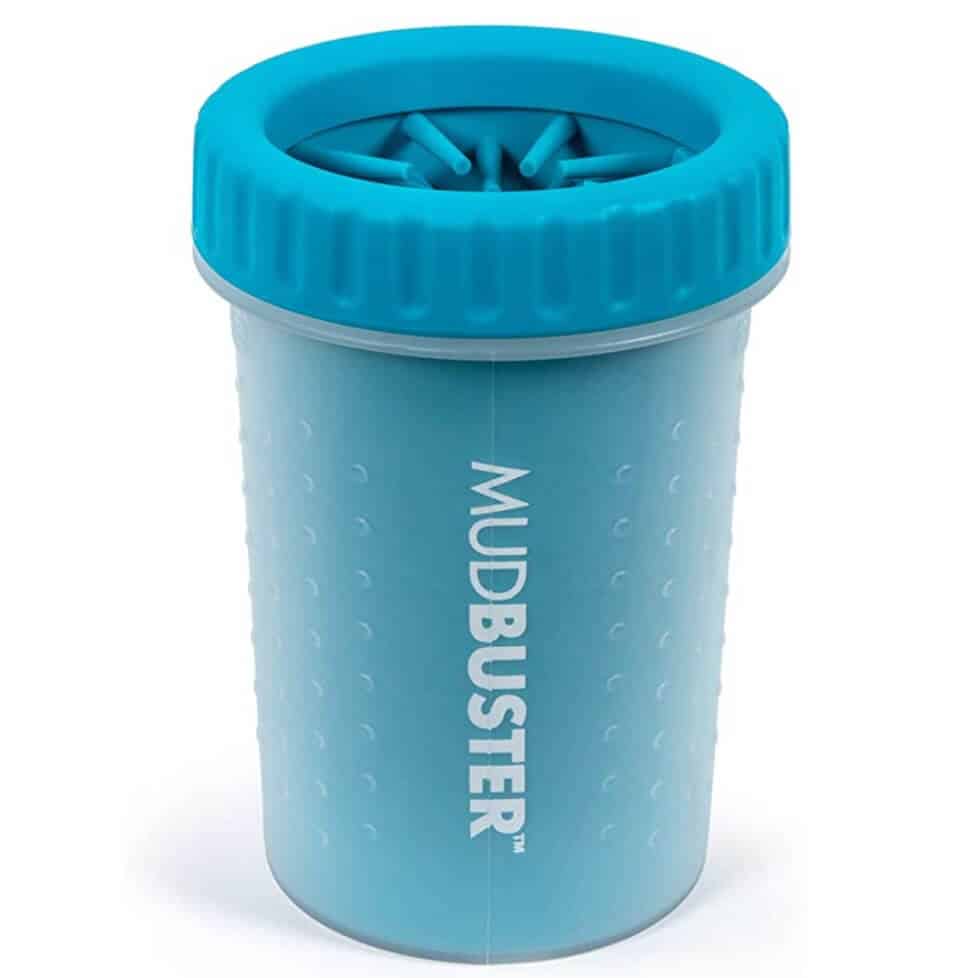
Trim Their Paws And Use Doggy Booties
While salt and chemicals can stick to your pup’s paws, this isn’t as much of a problem as them licking the latter right off the ground. Nonetheless, it can’t hurt to protect your best friend’s delicate paws from sharp ice and cold snow. Make sure to keep the hair between those cute toes nice and trim, so it doesn’t get all encrusted with ice crystals or grime, and then you might even pop on a pair of Ultra Paws Durable Dog Boots. Constructed from water-resistant nylon, they will keep your pet’s tootsies toasty.
Get Them A Snug Winter Coat
If you need to keep your Dood out a little longer than you would otherwise like to make sure they are sufficiently exercised, a decent coat could help keep them snugger for longer.
As an everyday winter option, PetRageous Designs Juneau Insulated Dog Jacket is a great choice. With its non-restrictive design, it’s suitable even for dogs who generally hate coats. It covers the body’s vital areas, is nicely padded, and is super easy to get on and off. Plus, the stitches are reflective, meaning you’ll always be able to spot your pet.
For milder snowy conditions, you might consider the Hurtta Body Warmer Dog Bodysuit. This carbon grey full-length coat covers your pup from neck to tail and all the parts in between. Made from a breathable fabric and with a reflective foil liner that reflects your dog’s body heat back to them, it is warm, comfortable, and looks fab on too.
When expecting more extreme weather, the Hurtta Extreme Overall Insulated Dog Snowsuit might be a better bet. Also featuring a foil interior but also with a weather-resistant exterior, and a high hood to protect delicate ears, and a cord to prevent drafts from getting inside. No other coat could possibly keep your pal warmer than this one.
Keep Their Coat In Good Condition
Protecting your pet while their outside is one thing, but there are also a few things you can do when they get back home that can go a long way towards keeping them in tip-top shape – as they always should be.
First off, the combination of frigid temperatures outside and central heating inside will have a drying effect on their hair and skin. This could cause a good deal of irritation. If your hound has been furiously scratching and you’ve been at a loss to explain why… well, now you know!
Soothe irritated skin with a boost of hydration from Zesty Paws Itch Soother Dog Shampoo with Oatmeal & Aloe Vera. Just take care not to bathe your pup too frequently, as by washing away oils naturally produced by the skin, you could end up drying them out all the more.

For those poor spots not protected by coat, try Bag Balm Pet Nose, Paw, & Hot Spot Moisturizer. Made with Petrolatum to moisturize and Lanolin to soothe and soften, it’s perfect for treating chafed, cracked, damaged skin on pets of all shapes and sizes.
Be Prepared For The Weather
If you like hiking out in the winter, you’ve likely thought about packing some emergency supplies for yourself. It’s good to factor your pet into that equation too. Especially if you enjoy taking them with you on your long walks. Even for simple trips to the park, they can come in handy. Dog food, medications, blankets, water, and toys are all must-have items. Canine first aid kits are always great to have with you while out hiking too.
Frequently Asked Questions About Exercising Goldendoodles in The Winter
Most Goldendoodles like to run around like crazy mutts from time to time, and it’s often far easier for them to do this in colder than hotter conditions. Plus, snow can be a nice and exciting novelty for them – especially if they don’t see it much or have never seen it at all. It’s always good to encourage your pet to enjoy their time in the great outdoors. Just be sure to keep a close eye on them for any signs that their body temperature might be getting a little too low.
Snow nose, a common name for parts of a dog’s nose that lose pigment and turn pink in colder weather, seems to be restricted to certain breeds. While the Golden Retrievers are susceptible to this, Poodles aren’t so much. So genetics will play a part in whether this happens to your pup or not. Even if it does, the effects are likely temporary and not really a cause for concern, although aging can cause this “problem” to persist. All you’ll need to do is be sure to plop a little sunscreen on this area come spring and summer.
Your average Goldendoodle, unless they have had their coat clipped very short, should be able to comfortably endure temperatures of down to 32 degrees without too many problems. With longer hair and the addition of a snug winter coat, and maybe even boots, they will be able to go out for reasonable periods in colder conditions. At well below 20 degrees, you’ll need to be particularly careful when taking your pup out for walks, though.
A nice winter coat (such as the ones recommended above) can be an excellent addition to your pet’s outdoor accessories if you live in a climate with more extreme temperatures and conditions. You likely won’t need it until it falls below 32 degrees – although smaller Doods are far more cold-sensitive than bigger ones. A coat will allow you to take your pet out for slightly longer walks and banish their excess energy.
Goldendoodles in Snow Final Thoughts
There’s absolutely no reason you shouldn’t enjoy walks with your Goldendoodle in the winter. Barring extreme weather or severely low temperatures, you should be able to get out and about and keep in mind the health benefits of exercise for both you and your pet. For happy short bursts, your dog’s coat is enough to keep them warm for short spells outside – it’s a little like you wearing your jacket. But it pays to be aware of the problems that can come with cold and snow so that you can be ready for anything and you and your Goldendoodle can continue to benefit from outdoor time all year round.

